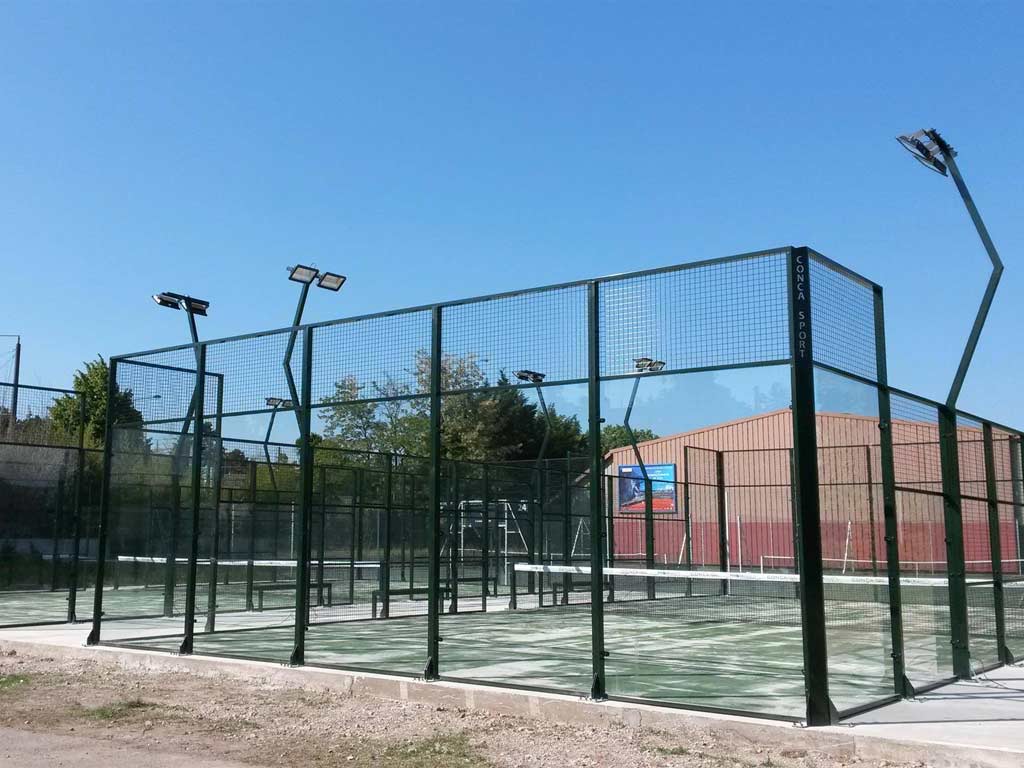The design and layout of a padel court are crucial to ensuring an optimal playing experience. This article guides you through the dimensions of a padel court, the materials needed, and the essential accessories to set up your court properly. Whether you’re an enthusiast looking to build your own court or a professional designing a playing space, follow these tips to make your project a success.
Official dimensions of a padel court
To begin with, it’s essential to know the official dimensions of a padel court. According to the Fédération Internationale de Padel (FIP), a padel court should be 20 metres long and 10 metres wide. The court is divided into two equal halves by a net, each half measuring 10 metres by 10 metres. The height of the net must not exceed 88 cm in the centre and 92 cm at the ends.
Materials used for a padel court
The construction of a padel court requires the use of specific materials to ensure durability and performance. Here are the essential elements to consider:
The playing surface
The playing surface is generally made of synthetic grass, which provides good grip and reduces the risk of injury. However, porous concrete or clay pitches can also be used. It is important to choose a quality material that is resistant to weather and wear.
Walls and fences
Walls and fences surrounding the site are often made of toughened glass or resistant synthetic materials. Glass allows better visibility and adds an aesthetic dimension to the pitch, while being robust and secure.
The net
The net should be made from strong materials such as polyethylene to last a long time. Make sure that the net is correctly tensioned and that it respects the heights recommended by the FIP.
Lighting: a fundamental aspect
Good lighting is essential to allow night games and to make the pitch usable at any time of day. The ideal lighting should provide uniform light without dazzling the players.
Types of lighting
LED lamps are recommended for their energy efficiency and longevity. They also provide a more natural, uniform light than fluorescent or halogen lamps.
Positioning the lights
Lighting should be strategically placed to cover the entire playing surface. Generally, four to six masts are placed around the pitch, each equipped with several lamps to ensure good light distribution.
Indispensable accessories for a padel court
In addition to the structural elements, several accessories are needed to optimise the players’ experience:
- Racquet holders: For easy storage of players’ rackets.
- Scoreboards: Useful for keeping track of points during matches.
- Benches: For the comfort of players and spectators.
- Referee table: During competitions, a referee’s table is needed to monitor play and keep score.
Building a multi-purpose area
A padel court can also be designed to serve other sporting functions. For example, you can incorporate lines for a tennis or badminton court to optimise the use of the court.
Choose versatile materials
Opt for materials that can be used for several types of sport. Artificial grass, for example, is ideal for padel, tennis and even five-a-side football.
Modular accessories
Adding panels or removable nets can also allow you to quickly change the configuration of the pitch to suit the sport being played. This offers greater flexibility and maximises the use of space.
Safety standards: a non-negotiable aspect
The layout of a padel court must also comply with rigorous safety standards to guarantee player safety.
Corner protection
Make sure all corners of walls and fences are rounded or protected to prevent injury.
Quality of materials
Use strong, durable materials for the construction of walls, fences and netting. Choose toughened glass for the walls, as it is not only resistant but also safe in the event of breakage.
The cost of building a padel court
The cost of building a padel court can vary depending on the materials used, labour and additional accessories. In general, you should expect to pay between €15,000 and €40,000 for a quality court.
Material costs
Artificial turf costs between €12 and €30 per square metre, while toughened glass walls can cost up to €2,000. Investing in quality materials can reduce maintenance costs in the long term.
Labour costs
Labour costs vary depending on the region and the expertise of the workers. The dimensions and layout of a padel court are essential elements that influence the quality of the game and the durability of the installation. By respecting the official dimensions, choosing the right materials and integrating the necessary accessories, you can create an optimal padel court that will delight amateurs and professionals alike.

